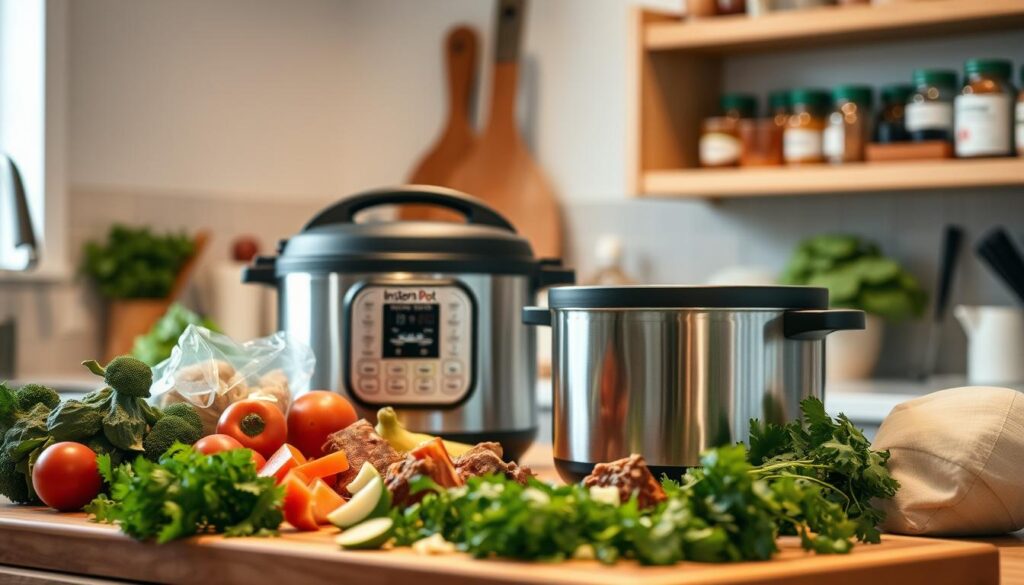
no bake cookies
When the weather turns chilly, nothing beats a warm, hearty meal to lift your spirits. Whether you’re cooking for family or hosting friends, a delicious dish brings everyone together. With minimal prep and flexible cooking methods, this comfort food is a crowd-pleaser.
Pre-cut ingredients save time, making it easy to whip up a satisfying food without hassle. Packed with protein and fresh veggies, it’s a balanced option for any occasion. Plus, with thousands of glowing reviews, you know it’s a tried-and-true favorite.
Key Takeaways
- Ideal for cold weather or cozy gatherings
- Quick prep with pre-cut ingredients
- Versatile stovetop, slow cooker, or Instant Pot options
- Nutritious with protein and vegetables
- Highly rated by thousands of home cooks
Introduction to the Perfect Beef Stew Recipe
Transform humble ingredients into a soul-warming masterpiece. The magic lies in layering flavors—starting with a golden sear on the meat. This caramelization creates a rich base, while slow simmering turns tough cuts melt-in-your-mouth tender.
*Why does searing matter?* Browning the meat unlocks umami through the Maillard reaction. It’s the same science behind crusty bread or roasted coffee. For extra depth, deglaze the pan with red wine, scraping up the flavorful browned bits (fond).
Collagen, the connective tissue in tougher cuts, breaks down during long cooking. This natural process transforms chewy fibers into silky, succulent bites. Low heat is key—think gentle bubbles, not a rolling boil.
- Pro tip: Use leftover roasted veggies for a smoky twist.
- Hungarian goulash, a cousin of classic comfort food, swaps paprika for wine.
Flexibility is this dish’s superpower. Swap ingredients based on seasons or preferences. Root vegetables? Yes. Mushrooms? Absolutely. The prep is simple, but the results feel gourmet.
Essential Ingredients for Beef Stew
The secret to a rich, flavorful dish starts with quality ingredients. From tender cuts to aromatic herbs, each component builds layers of taste. Here’s what you’ll need to create a balanced, satisfying meal.
Choosing the Right Cut
Opt for well-marbled stew meat like chuck roast. Its fat content melts during cooking, ensuring tenderness. Avoid lean cuts—they turn tough without collagen breakdown.
Fresh Vegetables and Herbs
A classic mirepoix (2:1:1 onion-carrot-celery ratio) forms the foundation. Add diced carrots and potatoes for texture. Fresh thyme and bay leaves infuse earthy notes.
| Potato Type | Best For |
|---|---|
| Yukon Gold | Creamy texture, holds shape |
| Russet | Absorbs flavors, softens more |
Broth and Seasonings
Use beef broth for depth, and ¼ cup tomato paste for umami. Fresh garlic and a pinch of salt pepper complete the profile. For gluten-free needs, substitute flour with cornstarch.
Pro tip: Render the fat from your meat first—it’s the secret to a robust base.
Step-by-Step Preparation Guide
Mastering the prep work ensures a flawless cooking experience. Follow these steps to build deep flavors and ideal texture.

Prepping the Meat
Pat the meat dry, then dredge in flour (1 tbsp per pound). This creates a golden crust when seared. Work in small batches to avoid steaming—3 minutes per side on medium heat.
Chopping Vegetables
Cut carrots, potatoes, and celery into uniform 2″ pieces. Even sizes mean even cooking. Save time by prepping veggies while the pot heats up.
Mixing the Base
Sauté onions until translucent, then deglaze with ½ cup red wine (optional). Scrape up browned bits for extra flavor. Layer in broth and season with salt pepper to taste.
- Pro tip: Chill the meat for 20 minutes before cutting—it slices cleaner.
- Use a Dutch oven for even heat distribution.
How to Cook Beef Stew on the Stovetop
A Dutch oven unlocks deep flavors through controlled, even cooking. Its heavy base prevents scorching, while the oven-safe lid traps moisture. This method requires just 1.5–2 hours for fork-tender results.
Start by searing meat in batches over medium heat. Deglaze with beef broth, scraping the pot’s bottom. Add vegetables and herbs, then reduce to a gentle simmer. Stir every 20 minutes to prevent sticking.
Pro tip: Toss in peas or greens 5 minutes before serving. They retain color and texture without overcooking.
| Cookware | Best For |
|---|---|
| Dutch oven | Even heat, oven-to-table |
| Stainless steel pot | Quick adjustments, lighter weight |
Keep the liquid at a lazy bubble—never a rolling boil. This slow breakdown of collagen ensures melt-in-your-mouth tenderness. For thicker consistency, mash a few potatoes against the pot’s side.
Slow Cooker Beef Stew Method
Set it and forget it—slow cookers turn simple ingredients into a hearty meal. With 6–10 hours of gentle cooking, even tough cuts become tender. The key? Layering flavors and timing additions perfectly.
Sear the meat first for maximum flavor. Browning stew meat in a skillet creates a caramelized crust. Skip this step, and your dish may taste bland. Deglaze the pan with a splash of broth, then add everything to the cooker.
*Pro tip:* Use low-sodium broth. Long cooking concentrates flavors, and regular broth can become too salty.
- Add hardy veggies early: Carrots, potatoes, and onions can cook all day.
- Delicate additions last: Toss in peas or green beans 2 hours before serving.
For a thicker consistency, try these tricks:
- Mix 1 tbsp cornstarch with 2 tbsp cold water, stir in during the last 30 minutes.
- Mash a few potatoes against the cooker’s sides—natural thickening!
Check doneness with a meat thermometer. Ideal internal temp? 200°F. At this point, collagen melts into silky richness.
Instant Pot Beef Stew for Quick Meals
Busy weeknights call for smart shortcuts—enter the Instant Pot. This gadget delivers tender, flavorful results in just 35 minutes, thanks to high-pressure cooking. Perfect for last-minute dinners or meal prep.

Start with the sauté function. Browning the meat first adds depth. Deglaze with broth to scrape up crispy bits. Pro tip: Use at least 1 cup liquid to avoid burn warnings.
Seal the lid and set to high pressure. Natural release is key—quick-release can toughen proteins. Let the pot sit for 10–15 minutes after cooking.
| Release Method | Effect |
|---|---|
| Natural | Tender meat, richer broth |
| Quick | Risk of dryness |
Thicken the stew post-cooking. Mix 1 tbsp arrowroot with cold water, then stir in. Add frozen peas or carrots after pressure cooking—they’ll stay crisp.
From prep to plate, this method shaves hours off traditional recipes. Ideal for hectic schedules or surprise guests.
Thickening Your Beef Stew Like a Pro
Achieving the perfect consistency transforms a good dish into greatness. Whether you prefer silky-smooth or hearty textures, these methods ensure balanced results every time.
Using Cornstarch Slurry
For a glossy finish, mix 1 tbsp cornstarch with 2 tbsp cold water. Stir into the pot during the last 15 minutes. *Pro tip:* Avoid clumps by whisking first.
Flour-Based Thickening
Flour adds a nutty depth. Try a roux—equal parts fat and flour cooked until golden. Alternatively, sprinkle 1 tbsp flour directly into the pot, stirring constantly.
- Beurre manié: Blend equal parts soft butter and flour for a French twist.
- Add tomato paste for umami and thickness.
Vegetable Puree Method
Blend 1 cup cooked veggies (carrots, beans) for natural thickness. It’s gluten-free and boosts flavor. For creaminess, mimic mashed potatoes with pureed cauliflower.
Fix over-thickening by adding broth bit by bit. Remember: patience ensures the ideal texture.
Serving Suggestions for Beef Stew
Elevate your dining experience with perfect pairings that enhance every bite. The right sides and bread transform a humble dish into a satisfying comfort food experience. Whether hosting guests or enjoying a cozy night in, these combinations balance richness and texture.
Best Bread Pairings
Crusty bread soaks up flavorful broth while adding contrast. Dinner rolls are classic, but popovers offer a buttery, airy alternative. Consider absorption rates—ciabatta’s open crumb holds more liquid than dense sourdough.
| Bread Type | Best Quality |
|---|---|
| Sourdough | Tangy flavor, sturdy texture |
| Ciabatta | Light, porous for maximum soak |
Side Dishes to Complement
Starchy bases like mashed potatoes or polenta add creaminess. For a lighter option, try garlic sautéed greens. They cut through richness with bright, earthy notes.
- Wine pairings: Cabernet Sauvignon for boldness, Malbec for fruity undertones.
- Leftover hack: Use extra stew as pot pie filling—top with puff pastry and bake.
Every element should harmonize, turning a simple meal into a well-rounded feast. Experiment with these recipes to find your favorite combo.
Storing and Freezing Beef Stew
Proper storage keeps your hearty dish tasting fresh for days. Follow these guidelines to lock in flavor and ensure food safety.
Cool leftovers to room temperature within 2 hours before refrigerating. Bacteria thrive in warm environments, so timing matters. For faster cooling, divide large portions into shallow containers.
Remove the fat cap after refrigeration. Skim solidified fat with a spoon for a lighter, healthier meal. This step also improves texture when reheating.
Freezer Storage Tips
Portion your stew for easy single servings. Use these methods:
| Method | Pros |
|---|---|
| Freezer bags | Space-saving, lay flat to stack |
| Airtight containers | Prevent freezer burn, reusable |
Label bags or containers with dates. Frozen beef dishes last up to 3 months at 0°F. Beyond this, quality declines.
Thawing and Reheating
Thaw safely in the fridge overnight or use a cold-water bath for quicker results. Never refreeze thawed food.
- Stovetop reheating: Stir every 5 minutes to distribute heat evenly.
- Broth boost: Add a splash of broth to restore moisture.
With these steps, your freezer becomes a pantry of ready-to-enjoy meals. No more wasted leftovers—just delicious, convenient eating.
Conclusion
Great meals come from mastering simple techniques. Searing locks in flavor, while slow simmering creates tender, rich results. A cornstarch slurry or veggie puree perfects the texture.
Make it your own—swap in seasonal produce or fresh herbs. This meal tastes even better the next day as flavors meld. Try prepping ahead for stress-free dinners.
Loved this beef stew recipe? Rate it or share your twist online! For another comfort food favorite, stay tuned for our chicken variation.
FAQ
What’s the best cut of meat for a tender result?
Chuck roast or shoulder works best. These cuts break down slowly, creating rich flavor and a melt-in-your-mouth texture.
Can I use frozen veggies instead of fresh?
Yes, but fresh carrots and potatoes hold their shape better. Frozen alternatives may soften too much during cooking.
How do I prevent the meat from getting tough?
Sear it first in hot oil to lock in juices. Then, cook low and slow—either on the stovetop or in a slow cooker.
What’s the secret to a thicker consistency?
A cornstarch slurry or a bit of flour stirred in at the end works great. Simmer for a few extra minutes to thicken.
Can I make this dish ahead of time?
Absolutely! Flavors deepen overnight. Store in the fridge for up to 3 days or freeze for up to 3 months.
What’s the ideal side for this meal?
Crusty bread or creamy mashed potatoes soak up the rich broth perfectly. A crisp salad adds freshness.
How long should I simmer for the best taste?
At least 1.5–2 hours on low heat. This lets the meat become fork-tender and blends all the flavors together.